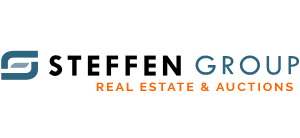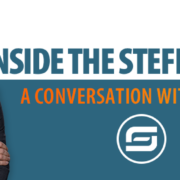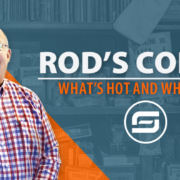Lake Life – “Is A Cottage Right For You?”
As some of you might have noticed, I’ve been absent from the newsletter for the past couple of weeks. Truth be told, our office has been extremely busy preparing an incredible lineup of spring auctions. I am also really excited about the residential and commercial properties that we have listed this spring and also the properties that will soon be coming on the market.
With the warmer weather finally here, it’s that time of year when lake dreams start to surface. I’ve had several conversations recently with clients asking: “Should I buy a lake cottage?” It’s a great question—and like most things in real estate, the answer is: it depends.
Owning a lake cottage can be one of the most rewarding investments, both financially and emotionally. Lazy mornings on the dock, summer evenings by the fire, and weekend getaways with friends and family create memories that last a lifetime. Our family has a cottage at Lake Wawasee, and the memories we make each summer are absolutely priceless. But I’ll be the first to tell you—it’s not all fun and games.
What You Need to Consider
- Double the Expenses: Two homes mean double the utilities, maintenance, insurance, and unexpected repairs. Don’t forget boat gas, boat insurance, groceries, and a never-ending pile of laundry (especially towels).
- Time and Commitment: A lake home is not just a weekend retreat—it’s also a lot of cooking, entertaining, cleaning, and caretaking.
- Investment Value: On the flip side, lake homes tend to hold their value well and are typically in strong demand, especially in Northern Indiana. Plus, if you don’t plan to use it every weekend, many owners successfully rent their cottages seasonally to help offset costs.
Types of Lakes in Northern Indiana
- All-Sports Lakes: These allow high-speed boating, tubing, skiing, and jet skiing all day long. Perfect for families who want action and entertainment on the water.
- Modified All-Sports Lakes: These allow high-speed boating only during designated hours (often 1–5 PM), making mornings and evenings more peaceful for kayaking, paddleboarding, or fishing.
- Fishing/Non-Motorized Lakes: These are ideal for people seeking peace and quiet. They typically have speed restrictions and limit boat size, offering a serene, nature-focused environment.
Most Popular Lakes in Northern Indiana
Here are a few standout lakes worth considering:
- Lake Wawasee (Syracuse, IN): Indiana’s largest natural lake, known for its upscale homes, vibrant boating scene, and active summer social life. It’s a true all-sports lake and highly desirable.
Average lakefront cottage: $1.0 M –$4.0M+ - Lake James (Angola, IN): A large, all-sports lake with deep water, sandbars, and access to the chain of lakes in Pokagon State Park. A great mix of cottages and luxury homes.
Average price: $750,000–$2.0M + - Clear Lake (Fremont, IN): A spring-fed, crystal-clear lake that’s ideal for swimming and boating. One of the cleanest lakes in the region.
Average price: $700,000–$1.5M+ - Lake Tippecanoe (Leesburg, IN): Indiana’s deepest natural lake and a haven for water enthusiasts. It connects to James Lake and Oswego Lake for additional boating territory.
Average price: $700,000–$1.5M - Shriner Lake (Columbia City, IN): A smaller but beautiful all-sports lake with more modestly priced homes and a close-knit feel.
Average price: $300,000–$600,000 - Sylvan Lake (Rome City, IN): Offers over 600 acres of water, popular for boating, tubing, and fishing. It’s one of the more affordable lakefront options in the region.
Average price: $300,000–$700,000 - Webster Lake (North Webster, IN): Known for the Dixie Boat and charming community feel. A mix of seasonal cottages and year-round homes.
Average price: $400,000–$900,000 - Hamilton Lake (Hamilton, IN): A growing hot spot with a good mix of all-sports recreation and peaceful areas. Great for families.
Average price: $500,000–$1.5M
* Prices listed are lake averages to be used only as a guide. Cottages may sell for more or less than the average prices listed, depending on location, frontage, condition, and amenities.
Final Thoughts
If you’ve been dreaming of a place on the water, make sure you do your research, talk with professionals, and truly understand your goals and lifestyle. Whether you’re looking for a quiet retreat or an action-packed getaway, Northern Indiana has a lake that fits.
As always, keep dreaming big, investing wisely, and remember—whether it’s homes, businesses, treasures, or transitions, we’re here to help you move forward.
Until next time,
Brandon Steffen



